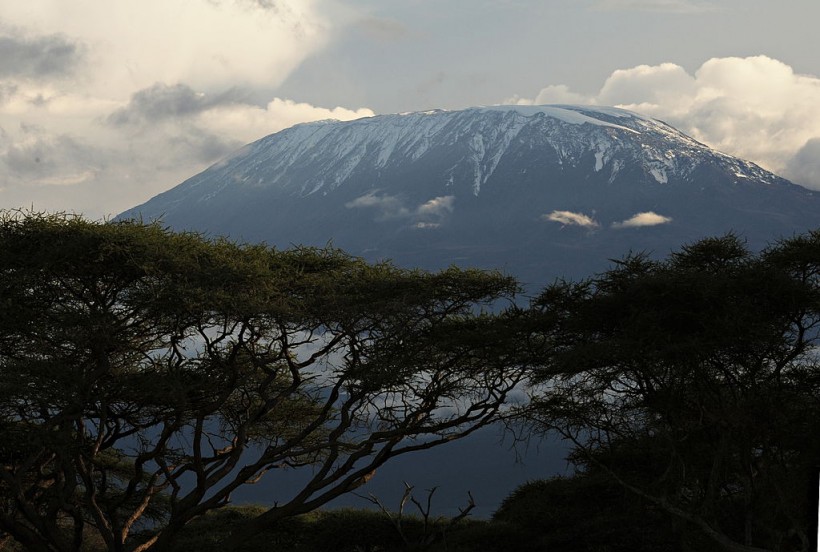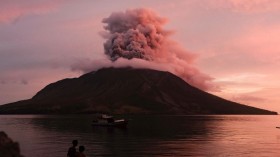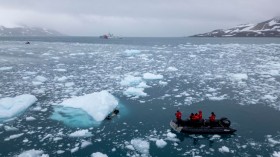According to the statement released by the United Nations Climate Change Agency on Tuesday, Africa and its nation's famed east Himalayas is expected to disappear within the next 2 decades.
Where in about 118 million impoverished inhabitants would experience water stress, flooding, or high temperatures, and the anthropogenic global warming is currently assumed to reduce the continent's GDP by 3% during mid-century.
According to the study, Africa's last rare glaciers may soon disappear. The rapid shrinking of the last remaining glaciers most especially in Eastern Africa signal the threat of irreversible change to the earth system.
Africa's remaining glacier regions on Mount Kilimanjaro in Tanzania, Mount Kenya in Kenya and the Rwenzori Mountains of Uganda are expected to be deglaciated by 2040s.
It should be noted that deglaciation threatens over 100 million people with drought, food insecurity and displacement from their homes. It also threatens tourism for example, most travelers who trek the Rwenzori Mountains are attracted by the glaciated peaks of Margherita.
Africa's Melting Glaciers

Africa's highest mountain, Mt. Kilimanjaro rises over a layer of clouds late afternoon on December 13, 2009. According to a recent study by the journal Proceedings of the National Academy of Sciences of the USA (PNAS) the ice sheet that capped Kilimanjaro in 2007 was 85 percent smaller than the one that covered its plateau in 1912.
The World Meteorological Organization (WMO) and African Union agencies' newest assessment on the condition of Africa's temperature portrays a pessimistic view of the nation's adaptability to more recurring natural catastrophes.
Per the study, last year, the country, Africa was the 3rd hottest on history with 0.86 degrees Celsius above normal in the previous 3 decades before the year 2010. It has heated up at a lesser speed than elevated tropics, but the consequences have been severe.
"The dramatic shrinkage of last surviving glaciation in eastern Africa, which become likely to vanish completely anytime soon, underlines the possibility of irreversible change to the Earth system," says by the WMO Secretary-General, Petteri Taalas in the report's preface.
The study was released as African countries requested a new mechanism to track funds from affluent nations that are failing to achieve a $100 billion yearly commitment to assist developing countries in combating climate change.
Tanguy Gahouma, Africa's chief environmental mediator, made the proposal prior to the COP26 global conference, highlighting concerns between world 's top 20 wealthiest nations, which create over three-quarters of greenhouse emissions, and underdeveloped nations, who suffer the severity of environmental degradation.
Also read: Plans to Extract Fossil Fuels May Put Global Temperatures at Unsafe Levels
Extreme Drought and Floods
At present estimates, the research predicts that the all 3 of Africa's mediterranean climate cold regions which are the Tanzania's Kilimanjaro, Kenya's Mount Kenya, and Uganda's Rwenzoris, are sometimes cited as the source of the mythical Highlands of the Moon that will be disappear by the year 2040s.
Furthermore, "it is predicted that on year 2030, up to 118 million incredibly disadvantaged individuals, living on far less than $1.90 a day would be vulnerable to shortages, storms, and hot temperatures. If sufficient mitigation actions are not done," stated African Union Agriculture Commissioner Josefa Sacko.
Global warming has long widely predicted to have a devastating burden on Africa, which contributes with less than 4% of greenhouse gases. Its agriculture is now extremely dry, several of its main towns are located along the coastline, and pervasive deprivation makes it difficult to adjust.
Besides water shortages on a region highly dependent on agribusiness, the research observed heavy floods in East and West Africa in 2020, whereas a record insect pest invasion, that begun a year prior, remained to cause havoc.
According to the research, Sub-Saharan Africa will need to invest $30-$50 billion, or 2% to 3% of GDP, on adaptability per year to avoid significantly severe impacts.
Typhoons and torrents affected an approximately 1.2 million residents in the year 2020, about twice of the affected residents abandoned their residences due to violence the same year.
Also read: People's Perspective on Environmental Conservation May be Linked to Genes
© 2024 NatureWorldNews.com All rights reserved. Do not reproduce without permission.
* This is a contributed article and this content does not necessarily represent the views of natureworldnews.com





